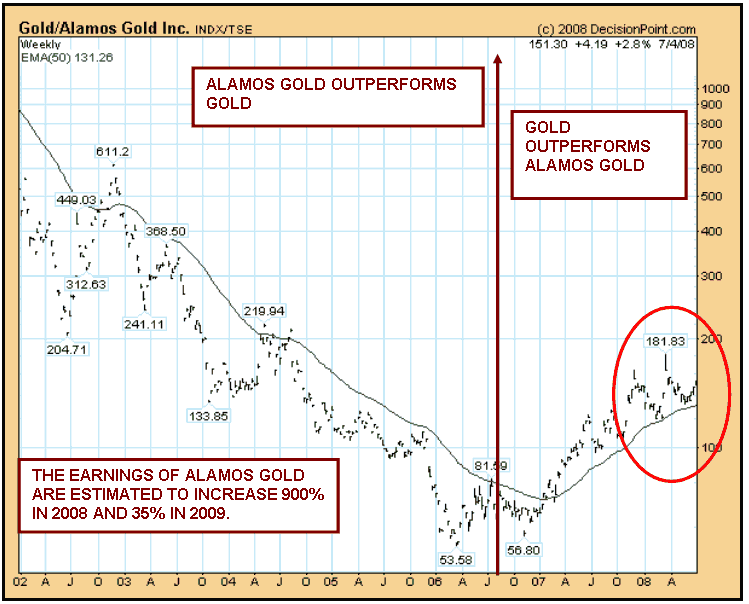Precious Metals Funds A Golden Opportunity
Post on: 13 Июнь, 2015 No Comment

Jul 17, 2009 4:09 PM
Article recommends Gold / PMs occupy no more than 1-2% of a porfolio. I say: Why Bother?Precious Metals Funds: A Golden Opportunity?
- Gregory Bresiger
- On Thursday July 16, 2009, 5:09 pm EDT
Gold and other precious metals can be a friendly port in a stock market storm. These are investments that tend to go up when standard garden-variety stocks head south, the bears are roaring, or the markets are in turmoil for political reasons. In this article, we’ll take a look at some precious metals funds and discuss some of the pros and cons of these alternative investments.
Metals and Market Turmoil
Consider the market period between February 2007 and February 2008. Precious metals funds were up an average of 42.90% in the one-year period ending February 29. Large cap growth funds, meanwhile, were up less than 1% during the same time period, according to Morningstar.
The disparity continues if one goes out five years. Precious metals funds had an average return of 25% annually. That was much better than the 10.25% earned by large-cap growth funds (data is through March, 2008), according to Morningstar. So, gold investors who went through some lean years in the 1990s have been in tall cotton recently. Why the huge difference? Stocks, which are financial assets, tend to do well in conditions that hurt gold and precious metals.
Generally, the stock market is up in most years so that means gold stocks and funds tend to do badly in most multi-year periods. These tend to be volatile investments, according to advisers such as Charles Hughes, a Bayshore, New York, certified financial advisor.
A small amount of gold or other precious metals can provide portfolio diversification. But how?
Gold is a bet against the dollar because it is a fiat currency without any commodity backing. Therefore, when the value of gold is rising, the value of the dollar tends to decline. Gold also has little correlation to the stock market — the two tend to go in opposite directions. One way to measure the correlation is through a measurement known as R-squared. This measures how faithfully an investment follows an index. For example, large-cap stock funds have a correlation of 78 to the S&P 500. Previous metals funds only have a correlation of about half that, according to Morningstar.
Another way to measure the riskiness of an investment is through beta. This is a measure that analyzes the market risk of a fund. It shows how responsive the fund is to a given market index such as the S&P 500 or the Lehman Brothers Government/Corporate Bond Index.
Hedging Against Currency
Stocks generally do terribly when there are inflation fears, which is a perfect environment for gold investments. For example, in an 18-month period in 1973-74, the stock market, in the midst of a period of high inflation, lost 42.6%, according to Jeremy Siegel’s Stocks for the Long Run. How was gold doing? It was booming on inflation fears, jumping from $35 an ounce to some $180 an ounce, according to The Complete Book of Gold Investing.
During times of a falling dollar and/or a weak economy, a small amount of precious metal investing in a portfolio, say just one or two percent, can provide diversification. How?
Getting More Egg Baskets
Buying gold is a big form of diversification. Bonds can also provide diversification, but no one knows for sure which year stocks will beat bonds or when stocks will dive because of inflation fears, making the gold bugs the big winners. However, when the stock market is headed for a slide because of inflation fears, then conditions are good for gold investors.
Gold and other precious metals are natural hedges against a currency losing some or all value. Therefore, Americans who buy gold are, in effect, shorting the dollar.
How to Choose a Precious Metals Fund
Firstly, financial advisers stress that the thing that makes precious metals so good in a bear market, also makes them very bad in a bull market. Their volatility can help or hurt a portfolio, so they must be used carefully.
Advisors say that precious metals should be a spice in a portfolio, not the main dish. They also argue that it should be no more than one or two percent of a portfolio. In selecting a fund, the usual criteria should apply, according to advisers. A fund should have at least a five-year record, and the manager should have a long record in running a precious metals portfolio. The fund should also have a long record so that one can see how it performed in a bear as well as a bull market, and it should be compared with other funds in its category.
The Bottom Line
So, what are the expenses of running a fund, and are they higher or lower than others in the category? Obviously, the latter is better. Low expenses can make a difference in performance over the long term. Used intelligently and carefully, precious metals can help the investor obtain decent returns in a terrible market.














